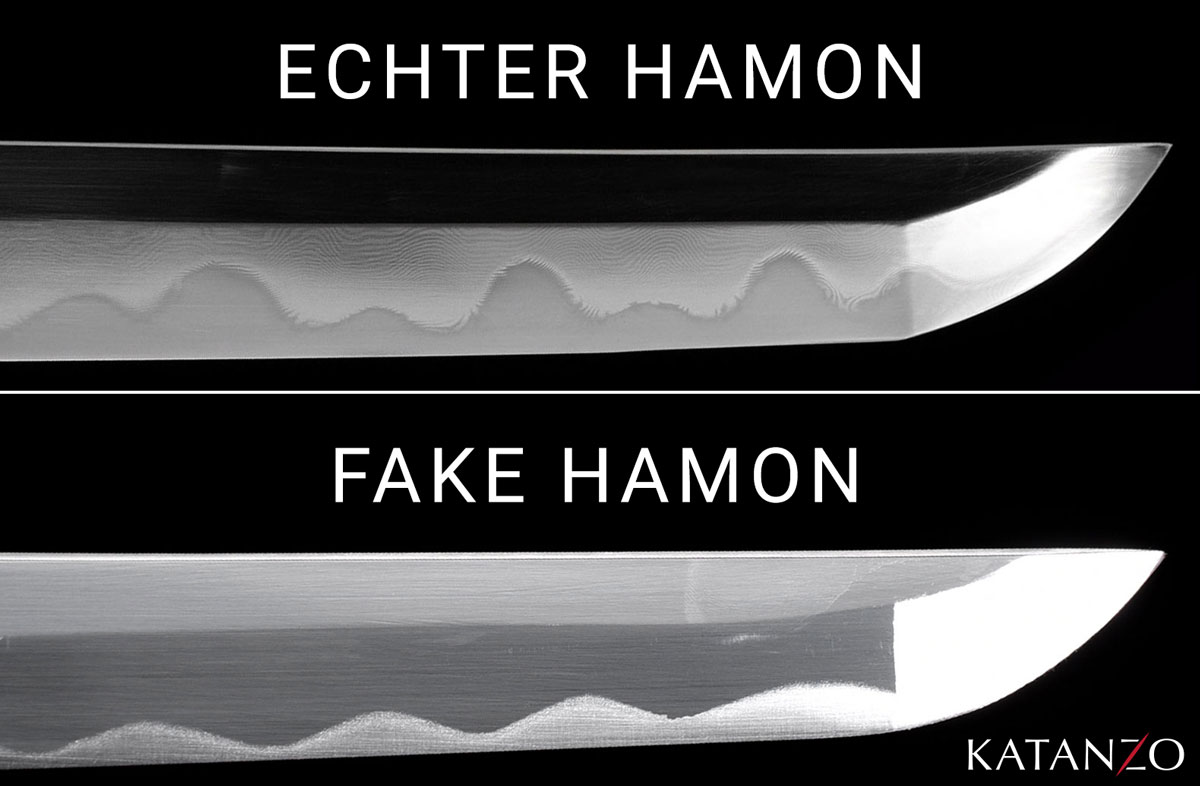What is a Hamon? In Japanese katana craftsmanship, Hamon 刃文 (literally translated as “blade pattern”) is a visual effect created on the blade of the katana through the Clay Tempering Process (also known as differential hardening).
The hamon is the outline of the hardened zone (yakiba) of the blade.

Clay Tempering (Differential Hardening) of a Blade
Blades made in this way are called “differentially hardened” or “clay tempered”, with a harder cutting edge than the back (mune) (example: back of blade 40 HRC / cutting edge 55 HRC). This difference in hardness results from the application of clay to the blade prior to cooling (quenching). Less or no clay causes the edge to cool faster, making it harder but more brittle, while more clay causes the center and back of the blade to cool more slowly, maintaining its toughness
Clay tempering makes a blade both hard and flexible
The hamon outlines the transition between the area of harder steel at the edge of the blade and the softer steel in the center and back of the sword. This difference in hardness is the goal of the process; appearance is purely a side effect. However, the aesthetic qualities of the hamon are very valuable – not only as evidence of clay tempering, but also in its artistic value – and the patterns can be quite complex.
Hamon in Modern Times
Many modern Katana and replicas do not have a real hamon because they are made from thoroughly hardened monosteel. The appearance of a hamon is often reproduced by various methods such as sandblasting or wire brushing to make the katana look more authentic. A real hamon can be easily identified by a “nioi,” a bright, speckled line a few millimeters wide that follows the length of the hamon.

Origin / Legend
According to legend, the famous katana smith Amakuni Yasutsuna developed the process of clay tempering (differential hardening) around the 8th century. The emperor was returning from a battle with his samurai when Yasutsuna noticed that most of the katana were broken:
“Amakuni and his son Amakura collected the broken blades and examined them. They were determined to develop a blade that would not break in battle, and secluded themselves for 30 days. When they reemerged, they bore the curved blade. The following spring, another war ensued. Again, the soldiers returned, but this time, all swords were intact, and the emperor smiled at Amakuni.”



Katana from our shop:
Katana “Doragon no Hi”
Katana “Kogane no Doragon”
Katana “Mitsuri”
Katana “Roiyaru Tonbo”